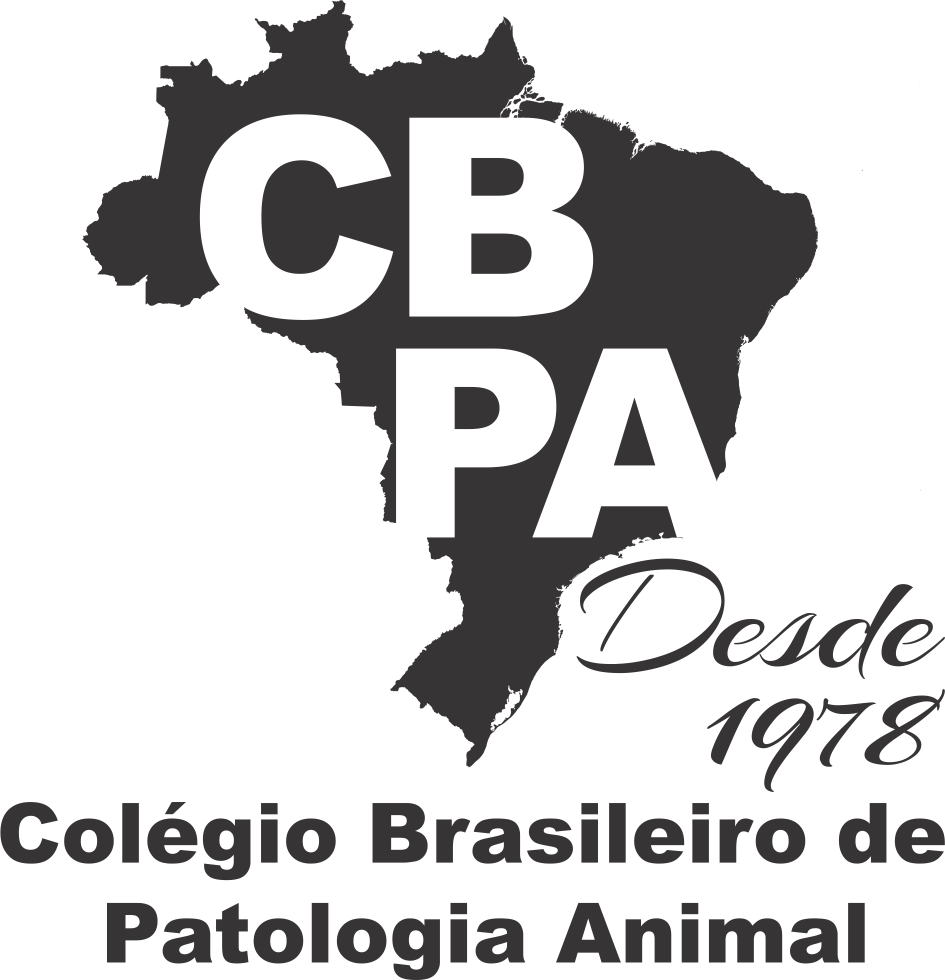Resultado da pesquisa (4)
Termo utilizado na pesquisa psittacines
#1 - Fatal traumatic injuries in free-living wild Passeriformes and Psittaciformes birds in Central Brazil, 2006-2018
Abstract in English:
Traumatic injuries are a significant cause of death for birds worldwide, as they are at an increased risk of collisions and other injuries due to man-made environments. This study examined the frequency and morphological characteristics of fatal traumatic injuries in endemic and migratory Passeriformes and Psittaciformes from the Cerrado Biome, a biodiverse but threatened area in Brazil. Results showed that fatal traumatic injuries were found in 21.8% of birds (285/1305), mainly in spring and summer, during the birds’ reproductive period. The yellow-chevroned parakeet (Brotogeris chiriri) and Passeriformes from the Thraupidae family were the most affected. Nearly 70% of the fatal injuries observed were to the thoracic, pelvic limbs, and skull, and types of fractures and affected bones were thoroughly evaluated. Blunt traumas were one of the most frequent causes of injuries. Injuries affecting the appendicular skeleton and head represented significant causes of traumatic death for Passeriformes and Psittaciformes. The frequency of these fatal injuries has been increasing in recent years, which may be related to the remarkable environmental changes in the Cerrado Biome and jeopardize the survival of many bird species.
Abstract in Portuguese:
As lesões traumáticas são uma causa significativa de morte nas aves em todo o mundo, pois apresentam um risco maior de colisões e outras lesões devido aos ambientes degradados e criados pelo homem. Este estudo examinou a frequência e as características morfológicas das lesões traumáticas fatais em Passeriformes e Psittaciformes endêmicos e migratórios do Bioma Cerrado, uma área com rica biodiversidade, mas ameaçada no Brasil. Os resultados demostraram que as lesões traumáticas fatais foram observadas em 21,8% das aves (285/1305), principalmente na primavera e verão, durante a época reprodutiva das aves. O periquito-do-encontro-amarelo (Brotogeris chiriri) e Passeriformes da família Thraupidae foram as aves mais frequentemente acometidas. Por volta de 70% das lesões fatais observadas foram nos membros torácicos e pélvicos, e crânio, e os tipos de fraturas e ossos afetados foram minuciosamente avaliados. Os traumas contudentes foram as principais causas das lesões. As injúrias que afetaram o esqueleto apendicular e a cabeça representaram as mais importantes causas de morte traumática para Passeriformes e Psittaciformes. A frequência dessas lesões fatais vem aumentando nos últimos anos, o que pode estar relacionado às mudanças ambientais marcantes no Bioma Cerrado e colocar em risco a sobrevivência de muitas espécies de aves.
#2 - Detection of virulence factors in Escherichia coli and analysis of Salmonella spp. in psittacines, 33(2):241-246
Abstract in English:
ABSTRACT.- Corrêa I.M.O, Flores F., Schneiders G.H., Pereira L.Q., Brito B.G. & Lovato M. 2013. [Detection of virulence factors in Escherichia coli and analysis of Salmonella spp. in psittacines.] Detecção de fatores de virulência de Escherichia coli e análise de Salmonella spp. em psitacídeos. Pesquisa Veterinária Brasileira 33(2):241-246. Departamento de Medicina Veterinária Preventiva, Universidade Federal de Santa Maria, Av. Roraima 1000, Santa Maria, RS 97105-900, Brazil. E-mail: maristelalovato@gmail.com
The enteric flora of psittacines is mainly composed of Gram positive bacteria. Gram negative bacteria, like Escherichia coli and Salmonella spp., have a high pathogenic potential and can be considerate as an indicative of management problems that may culminate in disease manifestation due to stress factors, poor diets and overcrowding, in combination with a high bacterial load on the environment. The objective of this study was evaluated the presence of Salmonella spp., Escherichia coli and the virulence genes iss and iutA from E. coli isolates. Forty-four samples were analyzed from psittacines living in captivity, which fifteen samples were from organs fragments of necropsied birds, and twenty-nine were from cloacal and crop swabs of red-spectacled parrots (Amazona pretrei) keeping in captivity. No samples were positive for Salmonella spp. In the samples in which E. coli was detected, both virulence factors (genes iss and iutA) were present.
Abstract in Portuguese:
RESUMO.- Corrêa I.M.O, Flores F., Schneiders G.H., Pereira L.Q., Brito B.G. & Lovato M. 2013. [Detection of virulence factors in Escherichia coli and analysis of Salmonella spp. in psittacines.] Detecção de fatores de virulência de Escherichia coli e análise de Salmonella spp. em psitacídeos. Pesquisa Veterinária Brasileira 33(2):241-246. Departamento de Medicina Veterinária Preventiva, Universidade Federal de Santa Maria, Av. Roraima 1000, Santa Maria, RS 97105-900, Brazil. E-mail: maristelalovato@gmail.com
A flora entérica dos psitacídeos é composta principalmente por bactérias Gram positivas. Bactérias Gram negativas, como Escherichia coli e Salmonella spp., apresentam elevado potencial patogênico, sendo consideradas indicativo de problemas de manejo, que poderão culminar em manifestação de doenças em decorrência de fatores estressantes, dietas deficientes e superlotação, combinados com alta carga bacteriana no ambiente. O objetivo deste trabalho foi avaliar a presença de Salmonella spp., Escherichia coli e os fatores de virulência dos genes iss e iutA dos isolados de E. coli. Analisou-se um total de 44 amostras provenientes de psitacídeos criados em cativeiro, sendo estas 15 fragmentos de órgãos de aves submetidas a exame de necropsia e também 29 amostras de swabs de cloaca e inglúvio de papagaios-charão (Amazona pretrei) criados em cativeiro. Nenhuma amostra foi positiva para Salmonella spp. Nas amostras de E. coli detectou-se ambos os fatores de virulência pesquisados.
#3 - Molecular detection of enteropathogenic Escherichia coli in asymptomatic captive psittacines, 32(9):922-926
Abstract in English:
ABSTRACT.- Saidenberg A.B., Teixeira R.H.F., Guedes N.M.R., Allgayer M.C., Melvelville P.A. & Benites N.R. 2012. Molecular detection of enteropathogenic Escherichia coli in asymptomatic captive psittacines. Pesquisa Veterinária Brasileira 32(9):922-926. Departamento de Medicina Veterinária Preventiva, Faculdade de Medicina Veterinária e Zootecnia, Universidade de São Paulo, Av. Prof. Dr. Orlando Marques de Paiva 87, São Paulo, SP 05508-270, Brazil. E-mail: andresaidenberg@usp.br
Psittaciformes are one of the most endangered groups of birds, and several Brazilian species are classified between vulnerable and critically endangered. It is thus necessary to identify agents that cause infections in captive wild animals and to assess the risks posed thereof and to design interventions to minimize the possibility of disease outbreaks, leading to the conservation of endangered species. The purpose of this study was to identify enteropathogenic Escherichia coli (EPEC) cloacal isolates from asymptomatic psittacines in captivity and evaluate the distribution of the EPEC pathotype. Cloacal swabs were obtained from 46 asymptomatic birds, and resulting isolates were tested by polymerase chain reaction (PCR) for the presence of the attaching and effacing gene (eae) and bundle-forming pilus structural gene (bfpA) of EPEC. Samples from several species were tested, and three samples were found to be positive for the eae and bfpA genes and characterized as typical EPEC. This is the first report of this pathotype in asymptomatic psittacines. Although certain E. coli strains are more pathogenic than others, various factors should be considered when determining the potential of E. coli isolates to cause disease in captive psittacines. Birds that are positive for the EPEC (typical) strain could be zoonotic sources of infection, and may have acquired these strains through contact with humans or domestic animals. These findings may also be valuable for the long-term management of endangered species ex situ as one EPEC sample was isolated from a Red-tailed Amazon (Amazona brasiliensis).
Abstract in Portuguese:
RESUMO.- Saidenberg A.B., Teixeira R.H.F., Guedes N.M.R., Allgayer M.C., Melvelville P.A. & Benites N.R. 2012. Molecular detection of enteropathogenic Escherichia coli in asymptomatic captive psittacines. Pesquisa Veterinária Brasileira 32(9):922-926. Departamento de Medicina Veterinária Preventiva, Faculdade de Medicina Veterinária e Zootecnia, Universidade de São Paulo, Av. Prof. Dr. Orlando Marques de Paiva 87, São Paulo, SP 05508-270, Brazil. E-mail: andresaidenberg@usp.br
Os psitacídeos são um dos grupos de aves mais ameaçadas no mundo e diversas espécies brasileiras são classificadas desde vulneráveis à criticamente ameaçadas de extinção. Torna-se, portanto, necessário identificar os agentes que causam infecções em animais selvagens em cativeiro e determinar os riscos relacionados de modo a intervir sobre os fatores envolvidos para diminuir a possibilidade de surtos de doenças e promover a conservação de espécies ameaçadas. O objetivo deste estudo foi identificar Escherichia coli Enteropatogência (EPEC) de isolados cloacais de psitacídeos assintomáticos em cativeiro e avaliar a distribuição do patotipo EPEC. Suabes cloacais foram coletados de 46 psitacídeos assintomáticos e os isolados foram testados pela reação em cadeia pela polimerase (PCR) para a presença do gene attaching and effacing (eae) e bundle forming pilus (bfpA) de EPEC. Amostras oriundas de diversas espécies foram testadas e três amostras resultaram positivas para os genes eae e bfp e caracterizadas como EPEC típicas. Esse é o primeiro relato em psitacídeos assintomáticos para esse patotipo. Apesar de que algumas cepas de E.coli serem mais patogênicas do que outras, diversos fatores devem ser considerados para determinar o potencial de isolados de E.coli de causar doença em psitacídeos em cativeiro. Aves positivas para cepas de EPEC (típicas) poderiam ser fontes de infecção zoonóticas e adquirir essas cepas através do contato com humanos e animais domésticos. Esses achados também podem ser valiosos para o manejo a longo prazo de espécies ameaçadas ex situ já que uma amostra de EPEC foi isolada de um Papagaio-de-cara-roxa (Amazona brasiliensis).
#4 - Principais processos neoplásicos encontrados em psitacídeos mantidos em cativeiro, p.445-451
Abstract in English:
ABSTRACT.- Godoy S.N., Alves V.A.F., Kanamura C.T. & Matushima E.R. 2009. [Main neoplasic processes in psittacines birds kept in captivity.] Principais processos neoplásicos encontrados em psitacídeos mantidos em cativeiro. Pesquisa Veterinária Brasileira 29(6):445-451. Instituto Brasileiro de Meio Ambiente e Recursos Naturais Renováveis, SHIN CA 02, Bloco D, Apto 408, Ed. Spazio Uno, Brasilia, DF 71.503-502, Brazil. E-mail: silng@uol.com.br
An anatomopathologic study of 130 captivy psittacines from zoos, breeders and rehabilitation centers showed the presence of neoplastic disease in seven birds, totalizing 5.4% of the cases. The neoplasms were identified like cholangiocarcinoma, cholangioma, lymphoma, haemangiosarcoma and renal cell carcinoma. The cholangiocarcinoma was the tumor most commonly observed. it was present in birds. This study describes the macro and microscopic findings of these tumors; also reports diagnostic methods employed to identify these neoplasms.
Abstract in Portuguese:
ABSTRACT.- Godoy S.N., Alves V.A.F., Kanamura C.T. & Matushima E.R. 2009. [Main neoplasic processes in psittacines birds kept in captivity.] Principais processos neoplásicos encontrados em psitacídeos mantidos em cativeiro. Pesquisa Veterinária Brasileira 29(6):445-451. Instituto Brasileiro de Meio Ambiente e Recursos Naturais Renováveis, SHIN CA 02, Bloco D, Apto 408, Ed. Spazio Uno, Brasilia, DF 71.503-502, Brazil. E-mail: silng@uol.com.br
An anatomopathologic study of 130 captivy psittacines from zoos, breeders and rehabilitation centers showed the presence of neoplastic disease in seven birds, totalizing 5.4% of the cases. The neoplasms were identified like cholangiocarcinoma, cholangioma, lymphoma, haemangiosarcoma and renal cell carcinoma. The cholangiocarcinoma was the tumor most commonly observed. it was present in birds. This study describes the macro and microscopic findings of these tumors; also reports diagnostic methods employed to identify these neoplasms.








